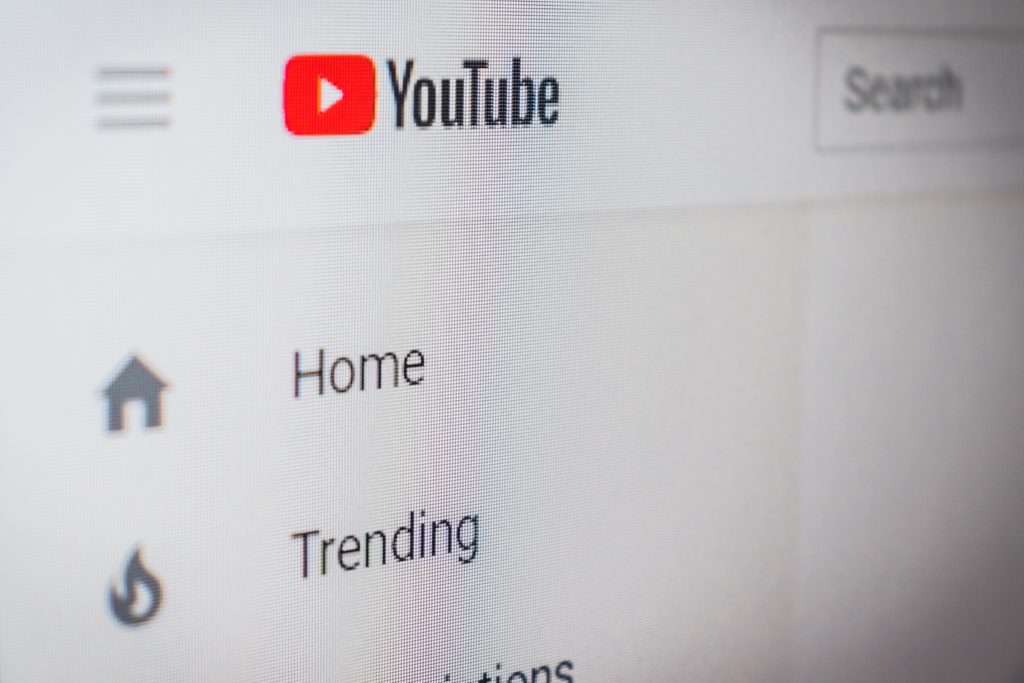9 content creation tips to grab your employees’ attention

The key to attention-grabbing content creation lies in a well-planned framework.
Whether it’s content for a blog, an intranet or internal comms – there are some essential rules to make the written word get as many eyeballs as possible.
For anyone running an intranet or blog, you’ll know how much time it takes to maintain it. Good content creation takes effort, working hours, and brain power, something not considered by many website owners – you can tell this by the number of abandoned and obsolete blogs on even the most established sites.
The problem is that if you’re going to manage the content of an intranet, it needs to be done right. There’s little value in doing half a job on the content side: it requires daily maintenance, care, and attention. Not applying this level of effort will ultimately get you nowhere. So, do it right, or don’t do it at all – neglecting your intranet’s content can have a detrimental effect on users.
Invest time and thought on the content creation side of your intranet, blog or website, and it will pay dividends over time.
So, when you have the resources to create content, how do you do it right? How do you create content that surges through the rankings and drives traffic to your site? How do you make your content act like a hardworking lead generator?
When it comes to scoring highly as a website, content creators are at the behest of Google. The search engine has set out a list of requirements that, if abided by, allow posts, blogs, and articles to be visible. Choose to ignore their criteria, and content plummets into obscurity.
While it may seem slightly despotic, Google’s rules exist to discourage the many bots, spammers, and black hat digital marketers from publishing inferior web content online. And if anything, the rules are an excellent outline to content creation that is of a good standard, comprehensive and delivers value to the reader. Google’s main aim for content marketers who want more website traffic, more social engagement, and more visibility is to produce quality content.
But what makes content ‘quality’

The question of quality is subjective, and SEO experts will offer differing opinions. Google’s guidelines go into great detail about how they wish content should appear, but the basic principles are:
- Make pages primarily for users, not for search engines.
- Don’t deceive your users.
- Avoid tricks intended to improve search engine rankings. A good rule of thumb is whether you’d feel comfortable explaining what you’ve done to a website that competes with you, or to a Google employee. Another useful test is to ask, “Does this help my users? Would I do this if search engines didn’t exist?”
- Think about what makes your website unique, valuable, or engaging. Make your website stand out from others in your field.
Some online content creation stats
Before creating content, it’s essential to bear in mind the challenges that content creators come up against. There are so many ways to communicate, which means there is more of a struggle to capture people’s attention now than ever before.
With so much distraction, it’s a challenge to engage people. In the brief moment that an online audience gives you while browsing, your content needs to be able to jump out at them from the page. When the average page visit lasts a little less than a minute – an online audience has little patience and expects to see what they need more or less instantly.
Stats show that 55% of all page views get less than 15 seconds of attention, so you need to be able to grab attention within ten seconds. And make sure it’s all there on the screen as 80% of our focus is spent looking at information above the fold.
The layout of our information is particularly important as heat maps, and other data graphics show that we spend 69% of our time viewing the left half of the page and only 30% on the right. The F-shape pattern is still the most predominant way of scanning a page. This is vital information for anyone laying out a webpage.
How to make compelling content

With this in mind, we have a number of ground rules for the content that we produce that align with Google’s guidance.
Originality
Google can quickly spot duplicate content and have made it clear that they will penalize those sites that exploit other people’s work. Adversely, they will reward sites that generate original content by improving site rankings. And of course, the obvious benefit is you have brand new, original content that is more likely to be read and enjoyed. The higher ranking will mean that more people will see it, and your audience will increase.
But ‘original’ content could still be misconstrued. In order to be rewarded by Google, you need to always bear in mind the ‘quality’ aspect – so no rehashing of ideas, or writing 2000 words of gobbledegook, (which bots still do by scraping content and reorganizing it to make nonsensical content that while ‘original’ is not ‘quality’).
To tick both the quality and original content boxes, you need to put forward fresh ideas, new ways of thinking, and different perspectives to the subject matter wherever possible. This will ensure people read through your work and link back to it – after all, nowhere else is offering the angle that you are presenting. And the more backlinks, the more authoritative your content is regarded by Google.
An attention-grabbing headline

There are a lot of different ways of making content more attention-grabbing, but one of the most important parts is the headline. This is the area that deserves some mulling over; after all, a good headline is one of the most powerful ways to entice the reader in.
Buzzfeed showed us that if there’s any crafting to do, it should be concentrated on making the headline irresistible, whether it’s through a listicle like “26 Moments That No 90s Kid Will Ever Get Over”, or irreverent “Why Are You Single?” or the offbeat, “Which Type of Bread Are You?”. While your content creation may need a more sober angle, a lot can be learned from how sites like Buzzfeed and Upworthy create titles that demand to be read.
It’s important to remember that SEO points are awarded to keywords being placed in the title – specifically at the beginning. However, this isn’t possible every time, and sounding natural is more important than following the rules on SEO. So, if you can: do it. If it seems forced: don’t do it.
Is it actionable?
When creating copy, the writer should bear in mind that the reader will be looking for guidance and direction. In order for people to get the best out of your content, you should be looking to provide ideas on how to apply the information. This will help the reader to get real benefit from your work and allow them to see the value in it.
So how do you make your content actionable? According to Crazy Egg, there are several elements that your copy should contain:
- It should target your specific audience
- It should provide value
- It should establish trust
- It should address your audience’s needs
- It should align with your marketing goal
- It should get your audience involved
- It should communicate clearly and effectively
It’s fair to say that actionability is often overlooked in content creation. But that doesn’t lessen its importance – in fact, you should make your content stand out by emphasizing its actionability. This way, you’re creating incredibly useful information, which will drive engagement and conversion rates.
Does it provide answers?

This is similar to actionability, in that you need to be the authority on a subject, in order to provide solutions that people are looking for. Consider the journey your reader has come on to land on your webpage: you need to provide answers to a set of inquiries that have attracted users to the page.
The success of Google lies in its ability to provide lightning-fast results to limitless inquiries. We’ve grown used to ultra-fast and highly intuitive search engines, and when it comes to crafting content, we need to think in a similar way. Our posts do not exist to show off a mastery over words, or a quick turn of phrase. They ultimately need to provide fast answers to questions that users are asking.
Make sure you’re providing information that is well explained, identifiable, and easy to find on the page (which is something we’ll move on to next).
Is the layout scan-friendly?
When it comes to providing a blog, or an article, or whitepaper or guide, the layout of your work has a huge role to play in being read. If you’re writing 2000 words on a single subject, no one wants to see a solid block of text.
The readiness and immediacy of searching for information online mean that our readers have little patience; they need to be able to get the gist of your data quickly. For them to do this, it must be ready to be scanned quickly, easy to read, and understandable. You can do this by using paragraphs, bullet points, paragraph headers, images, lists, and other formatting to provide a smooth and scannable way to read your material.
To the point
While it’s essential to create content that is explanatory, descriptive, and exploratory, once again, bear in mind the reader. It’s not advisable to make your audience wade through paragraphs to get to the crux of the matter. Instead, eliminate the fluff and spoon feed your content into bite-size, manageable chunks. You can do this by having the message of your content in the first paragraph and avoiding elaborate language, overly long sentences, or combining too many narrative strands into your message. By making your points short and concise, you engage the reader more easily than using flowering language that could lose people.
Long-form is still king

While we’re extolling the virtues of keeping it neat, it’s important to remember brevity isn’t the way forward – Google still prefers long-form posts. And while Seth Godin demonstrates the power of fewer words in his blog post here, the majority of us content creators don’t hold the same reputational swagger (or have an equally authoritative domain) as he does, so we have to play by the rules. Longer content gains higher search ranks for many reasons including that Google perceives you as an authority in your industry,
If you prefer the sound of hammering out a pithy 300-worder on your subject rather than a more expansive 2000+ word blog, have a think about which you’d prefer as a casual reader. A shorter blog might completely miss the mark, not answer the right questions or contain the information the reader is searching for. The long form post will contain more keywords, has far more chance of appealing to a bigger crowd of people, and has more sustainability than their diminutive counterparts.
Always include media

The written word is much improved by supporting media. Using images and video in your content allows you to break up text with content that adds value. People learn in different ways, some are more visual than others, and video and images can be a powerful way to illustrate your point.
Visual aids should be included in every blog; not only does it make the blog look more attractive, but images and videos can also often present more information than words alone can provide. And there’s no excuse not to include them with so many free resources online, like YouTube, Vimeo and great free image websites like Unsplash.
And of course, be accurate
In the era of fake news, you need to back up your claims with reliable data. Sources should verify all stats, claims, and snippets of info. Accuracy builds trust with the reader, and footnotes or hyperlinks to the source of your information is well advised. The consequence of people discovering inaccuracies in one of your blog posts can be catastrophic for your brand.
Linking back to sources not only allows you to earn more trust from your readers, but it also helps search engines to understand what your content is about, allowing it to be categorized more easily.
Content creation isn’t something that can be left on the back burner of a task list. Done correctly, and well, can ensure that it takes center stage of your marketing or intranet campaign, allowing you to grow a loyal follower base, build your list and create evergreen content creation that continues to work hard year after year.
